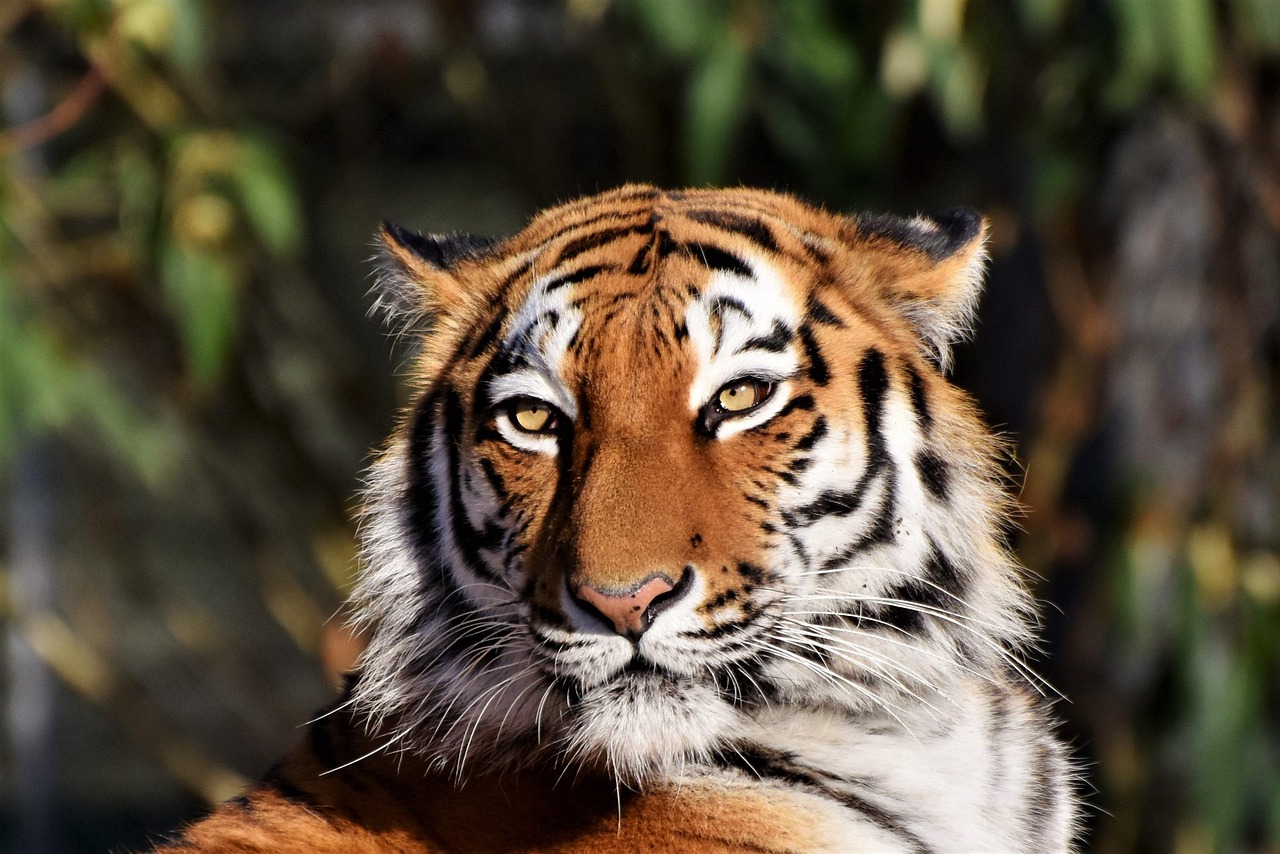The primary host plants for Tiger Swallowtail eggs, which are crucial for larval survival, include species such as Eastern Black Cherry, Willow, and Sweetbay Magnolia. These plants provide essential nutrients and a suitable environment for the caterpillars as they develop, ensuring a higher chance of survival and successful metamorphosis into butterflies.
Tiger Swallowtails are one of the most recognizable butterflies in North America. Their striking yellow and black coloration makes them a favorite among butterfly watchers and gardeners alike. However, to appreciate these beautiful insects, it is vital to understand their life cycle, particularly the importance of host plants. The first stage of their life cycle begins when adult females lay eggs on specific plants that will serve as food for the hatching larvae.
The choice of host plants is critical. Not all plants can support the nutritional needs of the larvae. The Tiger Swallowtail caterpillars are picky eaters. They rely heavily on specific trees and shrubs to provide the right kind of foliage required for their growth. Understanding these host plants not only helps in nurturing these butterflies but also plays a significant role in conservation efforts.
Key Host Plants for Tiger Swallowtail Eggs

Several plants are particularly favored by the Tiger Swallowtail for egg-laying. Some of the most important ones include:
- Eastern Black Cherry (Prunus serotina): This is perhaps the most preferred host plant. Its leaves are rich in nutrients and provide a safe environment for larvae.
- Willow (Salix spp.): Willows are another common choice. Their tender leaves are highly palatable to young caterpillars.
- Sweetbay Magnolia (Magnolia virginiana): This plant offers a unique habitat and is favored in certain regions.
- River Birch (Betula nigra): The leaves of river birch are also suitable for larvae development.
- Red Maple (Acer rubrum): Known for its vibrant fall colors, red maple also serves as a food source for caterpillars.
These host plants not only support the caterpillars’ nutritional needs but also offer shelter from predators. The presence of these plants in gardens and natural habitats can significantly enhance local butterfly populations. Gardeners can play an important role by incorporating these species into their landscaping.
It’s also essential to consider the distribution and growth patterns of these host plants. For instance, Eastern Black Cherry is often found in various habitats ranging from forests to urban areas. Its adaptability makes it a vital resource for Tiger Swallowtails across a broad geographic area.
| Host Plant | Scientific Name | Description |
|---|---|---|
| Eastern Black Cherry | Prunus serotina | A tall tree with nutrient-rich leaves, ideal for larvae. |
| Willow | Salix spp. | Fast-growing trees or shrubs with soft leaves. |
| Sweetbay Magnolia | Magnolia virginiana | A fragrant tree that provides a unique habitat. |
| River Birch | Betula nigra | A hardy tree with flexible growth habits. |
| Red Maple | Acer rubrum | Known for its beautiful foliage and adaptability. |
Gardeners interested in attracting Tiger Swallowtails should consider planting these species in their yards. By providing a habitat conducive to egg-laying and larval development, one can contribute positively to the ecosystem while enjoying the beauty of these magnificent butterflies. Understanding these host plants lays the foundation for fostering environments that support the entire life cycle of the Tiger Swallowtail.
Importance of Native Plants
Using native plants in landscaping is essential for supporting local wildlife, including the Tiger Swallowtail butterfly. Native plants are adapted to the local environment and offer the best food source for native insects and other wildlife. When gardeners choose native host plants, they create a sustainable habitat that benefits not only the butterflies but also other pollinators and local ecosystems.
Native plants typically require less maintenance, as they are better suited to the local climate and soil conditions. They are more resilient to pests and diseases, making them a practical choice for gardeners looking to reduce chemical use. Here are some reasons why native plants are vital for Tiger Swallowtail survival:
- Natural Adaptation: Native plants have evolved alongside local wildlife, providing essential nutrients and shelter.
- Increased Biodiversity: Planting a variety of native species promotes a diverse ecosystem, supporting a wider range of insects and birds.
- Soil Health: Native plants contribute to healthy soil by preventing erosion and promoting beneficial microorganisms.
- Water Efficiency: These plants often require less water than non-native species, reducing irrigation needs.
- Pollinator Support: Native plants attract various pollinators, enhancing cross-pollination among plant species.
Creating a Butterfly Garden
A butterfly garden can be a beautiful and functional space that attracts not only Tiger Swallowtails but also other butterfly species. To create an effective butterfly garden, consider the following steps:
- Select Host Plants: Choose a variety of native host plants suitable for the Tiger Swallowtail, such as those mentioned previously.
- Add Nectar Plants: Include flowering plants that provide nectar. Some excellent choices for nectar sources include:
- Echinacea (Coneflower)
- Lantana
- Milkweed
- Aster
- Bee Balm
- Create Sunlit Areas: Butterflies are ectothermic and require warmth from sunlight. Ensure there are plenty of sunny spots in the garden.
- Provide Shelter: Incorporate shrubs or small trees to offer protection from wind and predators.
- Add Water Sources: Include shallow dishes with clean water or mud puddles where butterflies can drink.
Managing Your Butterfly Garden
Once you have established your butterfly garden, proper management is necessary to ensure its success. Here are some effective management practices:
- Avoid Pesticides: Pesticides can harm butterflies at all life stages. Focus on natural pest management techniques instead.
- Regular Maintenance: Keep the garden tidy by removing weeds and dead plant material while allowing some natural growth to support caterpillar development.
- Observe Butterfly Activity: Spend time observing which plants attract butterflies and adjust your garden accordingly.
- Rotate Plants: To prevent any plant diseases from spreading, consider rotating certain species every few years.
- Educate Others: Share your knowledge of butterfly gardening with friends and family to encourage more people to participate in conservation efforts.
Creating a butterfly garden that incorporates host and nectar plants is a rewarding endeavor. By investing time and effort into this project, you can significantly impact the survival of the Tiger Swallowtail and other butterfly species. Connecting with nature through gardening fosters appreciation for these beautiful creatures and highlights the importance of preserving their habitats.
The Role of Community in Conservation
The conservation of Tiger Swallowtails and their habitats often requires community involvement. Working together with neighbors, schools, and local organizations can lead to more significant ecological impacts. Here are some ways communities can come together for butterfly conservation:

- Create Community Gardens: Establishing shared spaces allows multiple families to contribute to a butterfly-friendly environment.
- Organize Workshops: Hosting educational events can raise awareness about the importance of butterflies and native plants.
- Participate in Citizen Science: Engage in local butterfly counts or monitoring programs to gather data on butterfly populations.
- Sponsor Local Habitat Restoration Projects: Collaborate with environmental organizations to restore native habitats that support butterflies.
By fostering a collective effort in your community, you can create more extensive networks of habitats that support not just the Tiger Swallowtail but myriad other wildlife species as well. Working together enhances the chances of success in conservation initiatives, benefiting both humans and nature alike.
The Life Cycle of the Tiger Swallowtail

Understanding the life cycle of the Tiger Swallowtail butterfly is essential for fostering an environment that supports its development. This life cycle consists of four main stages: egg, larva (caterpillar), pupa (chrysalis), and adult butterfly. Each stage has distinct requirements, particularly concerning host plants.
Stage 1: Egg
The female Tiger Swallowtail lays her eggs on the underside of host plant leaves. This positioning helps protect the eggs from predators and harsh weather conditions. The eggs are small, rounded, and typically green or yellow in color, blending in with the foliage. Depending on environmental conditions, the eggs take about 7 to 10 days to hatch.
Stage 2: Larva (Caterpillar)
Once the eggs hatch, the young caterpillars emerge and begin feeding on the host plant leaves. This stage is critical for their growth and development. The caterpillars go through several molts as they grow, eventually reaching a length of about 3 to 4 inches. They have a unique appearance, often resembling bird droppings or twigs, which helps them evade predators.
During this stage, it is crucial for the larvae to have access to abundant food sources. They consume large quantities of leaves to store energy for their transformation into pupae. The choice of host plants directly impacts their survival rate during this vulnerable stage.
Stage 3: Pupa (Chrysalis)
After several weeks of feeding, the caterpillars enter the pupal stage. They find a safe location on a branch or leaf where they can attach themselves securely. The chrysalis is usually green or brown, allowing it to blend in with its surroundings. Inside, the caterpillar undergoes a remarkable transformation called metamorphosis.
This stage can last from 10 days to several weeks, depending on environmental conditions such as temperature and humidity. During this time, the caterpillar’s body is restructured into that of a butterfly.
Stage 4: Adult Butterfly
Once metamorphosis is complete, the adult Tiger Swallowtail emerges from the chrysalis. Initially, its wings are crumpled and wet. It will pump fluid into its wings to expand them and allow them to dry before taking its first flight. Adult butterflies primarily feed on nectar from flowers, but they also require host plants for laying eggs.
Understanding this life cycle highlights why providing suitable host plants is essential for ensuring larval survival and promoting healthy populations of Tiger Swallowtails.
Challenges Facing Tiger Swallowtails
Despite their resilience, Tiger Swallowtails face numerous challenges that can threaten their populations. Awareness of these challenges can help in developing effective conservation strategies.
- Habitat Loss: Urbanization and agricultural expansion reduce natural habitats where host plants thrive. This loss limits resources for both larvae and adults.
- Pesticide Use: Chemical pesticides can harm not only the butterflies but also their food sources. Reducing pesticide usage in gardens can create safer environments for pollinators.
- Climate Change: Changes in climate can affect the distribution of host plants and disrupt the timing of life cycle stages, leading to mismatches between food availability and butterfly emergence.
- Predation: Increased populations of predators like birds or invasive species can put added pressure on vulnerable caterpillars and eggs.
- Pollution: Air and water pollution can impact plant health and reduce the availability of suitable host plants, further affecting butterfly populations.
Conservation Efforts

To support Tiger Swallowtails and similar species, various conservation efforts are underway globally. These initiatives aim to restore habitats, raise awareness about butterfly conservation, and promote sustainable gardening practices.
- Habitat Restoration: Organizations work to restore natural habitats by planting native species and removing invasive plants that compete for resources.
- Education Programs: Schools and community groups offer workshops and activities focused on butterfly conservation, helping to instill a sense of responsibility in future generations.
- Butterfly Waystations: Many gardeners create designated areas in their yards known as butterfly waystations. These areas provide food and shelter for butterflies throughout their life cycles.
- Research Initiatives: Ongoing research helps scientists understand butterfly populations better, monitor changes over time, and develop effective conservation strategies.
- Policy Advocacy: Conservation organizations advocate for policies that protect natural habitats and promote sustainable practices at local, state, and federal levels.
By participating in these efforts, individuals and communities can contribute to the protection of Tiger Swallowtails and ensure their survival for future generations. Engaging with conservation initiatives fosters a deeper connection to nature while promoting biodiversity in local ecosystems.
Final Considerations for Supporting Tiger Swallowtails
In addition to the previously discussed conservation efforts, individuals can take further action to create environments that foster the survival of Tiger Swallowtails. Each person’s contribution can make a significant difference in the overall health of local ecosystems. Here are several practical steps that anyone can take:
- Plant a Diverse Garden: Incorporate a variety of native plants in your garden. This diversity supports not only Tiger Swallowtails but also other pollinators and beneficial insects.
- Participate in Local Conservation Groups: Joining local organizations focused on butterfly conservation can provide resources, support, and a community of like-minded individuals.
- Share Knowledge: Educating friends, family, and neighbors about the importance of host plants and butterflies can inspire collective action in your community.
- Support Local Farmers: Purchasing produce from local farmers who practice sustainable agriculture can help maintain natural habitats and reduce pesticide use.
- Create Educational Materials: If you have expertise in gardening or ecology, consider developing informational pamphlets or online content that educates others about the importance of host plants for butterflies.
Engaging in these practices not only benefits the Tiger Swallowtail population but also enhances the beauty and ecological health of your surroundings. Every small effort contributes to a larger movement towards sustainability and biodiversity preservation.
Conclusion
The survival of the Tiger Swallowtail butterfly hinges significantly on the availability of suitable host plants, which play a vital role in their life cycle. From eggs to adult butterflies, each stage relies on specific plants for nourishment and habitat. By promoting native species and creating conducive environments, we can ensure that these remarkable insects continue to thrive in our natural landscapes.
As communities come together to plant gardens, restore habitats, and advocate for sustainable practices, they not only protect the Tiger Swallowtail but also contribute to broader ecological health. The lessons learned from supporting this beautiful butterfly extend beyond its survival; they highlight the interconnectedness of all species within an ecosystem.
Ultimately, it is our collective responsibility to nurture the environments that sustain these creatures. By taking informed actions and participating in conservation efforts, we can foster a future where Tiger Swallowtails and other wildlife flourish alongside us. The beauty of nature is enhanced when we recognize our role as stewards of the earth, ensuring that generations to come will enjoy the sight of these stunning butterflies dancing through gardens and meadows.
In conclusion, fostering an understanding of host plants for Tiger Swallowtail eggs is essential for ensuring their larval survival and overall population sustainability. Through individual actions and community involvement, we can cultivate a rich habitat that supports not only these butterflies but all forms of life that share our planet.
